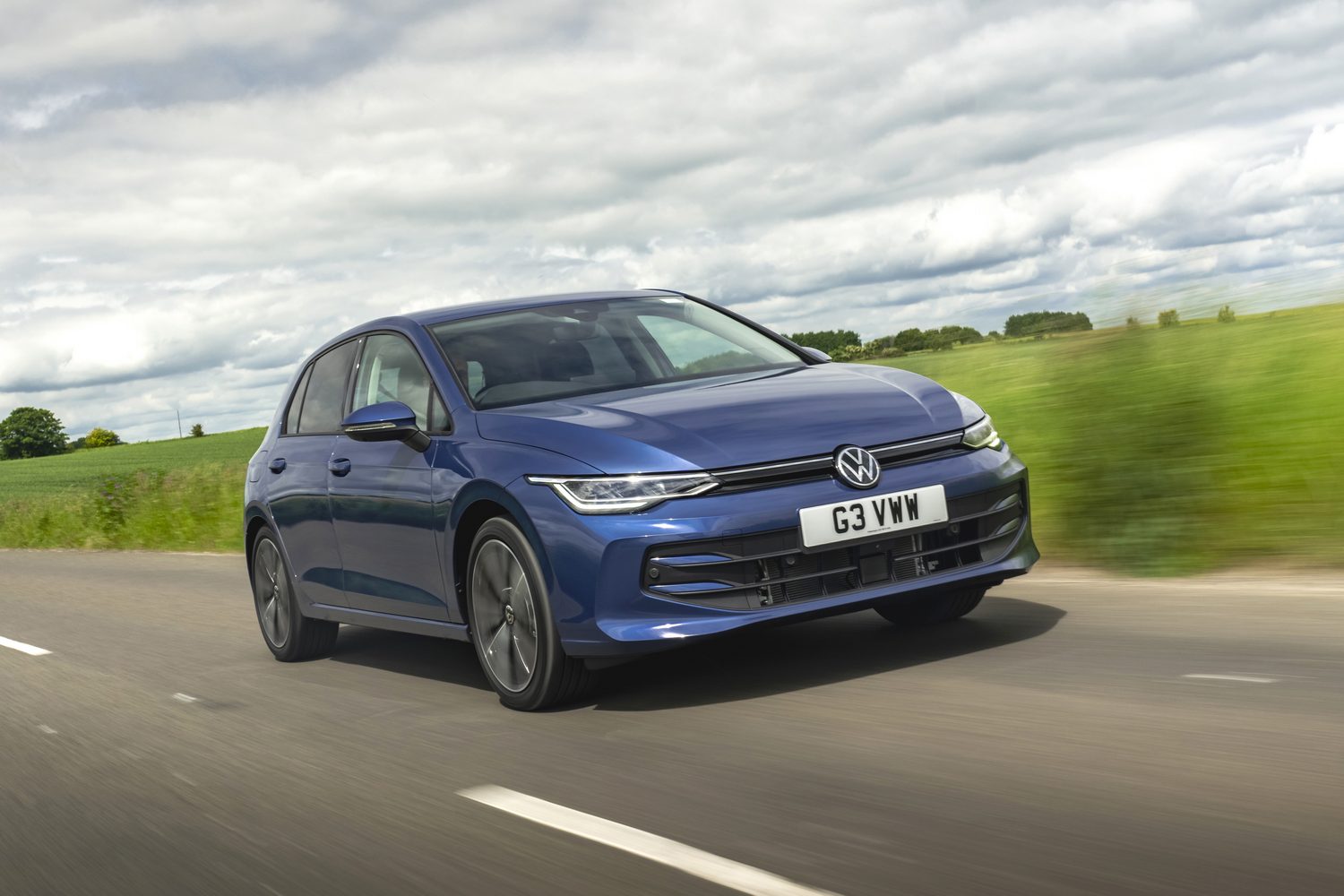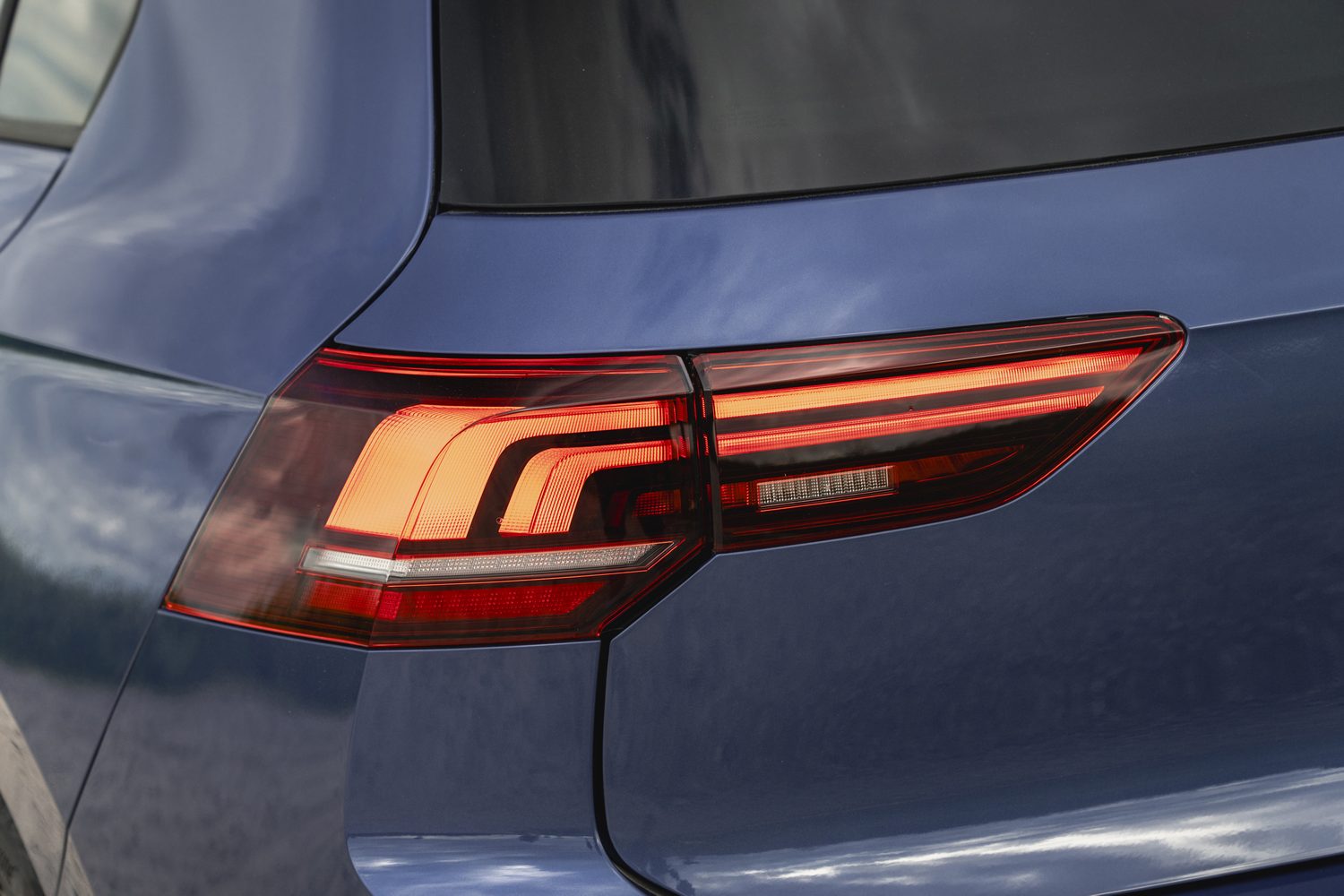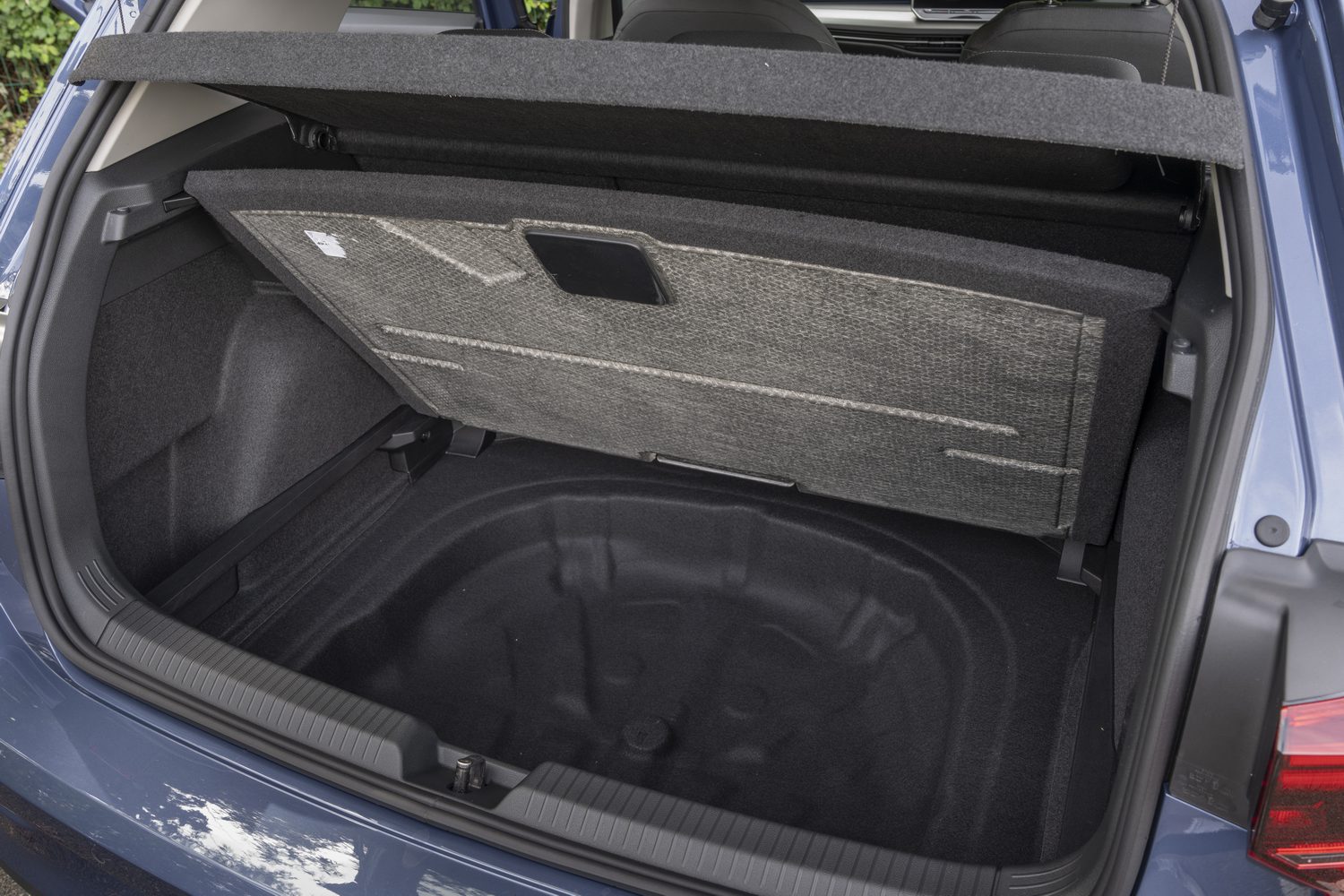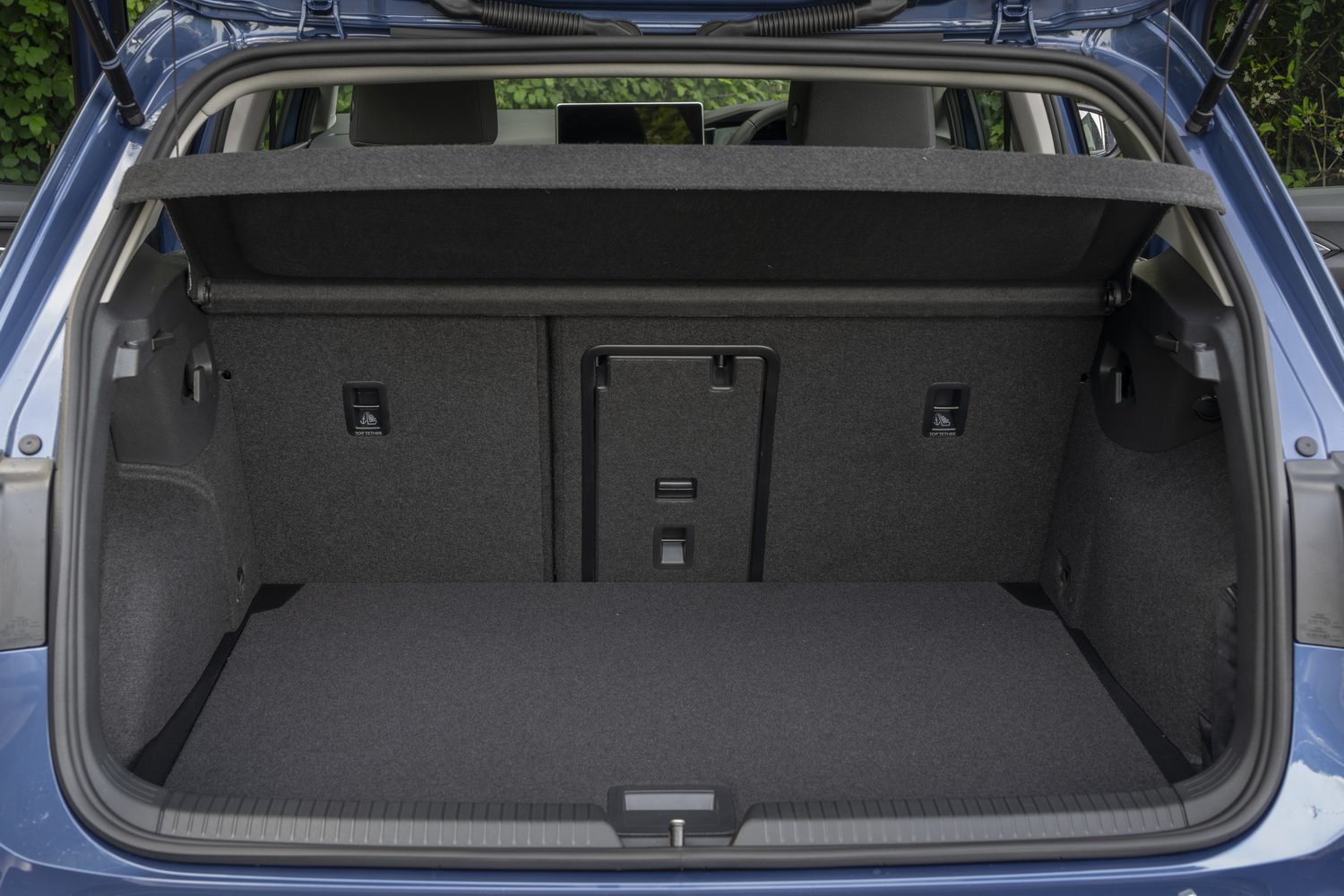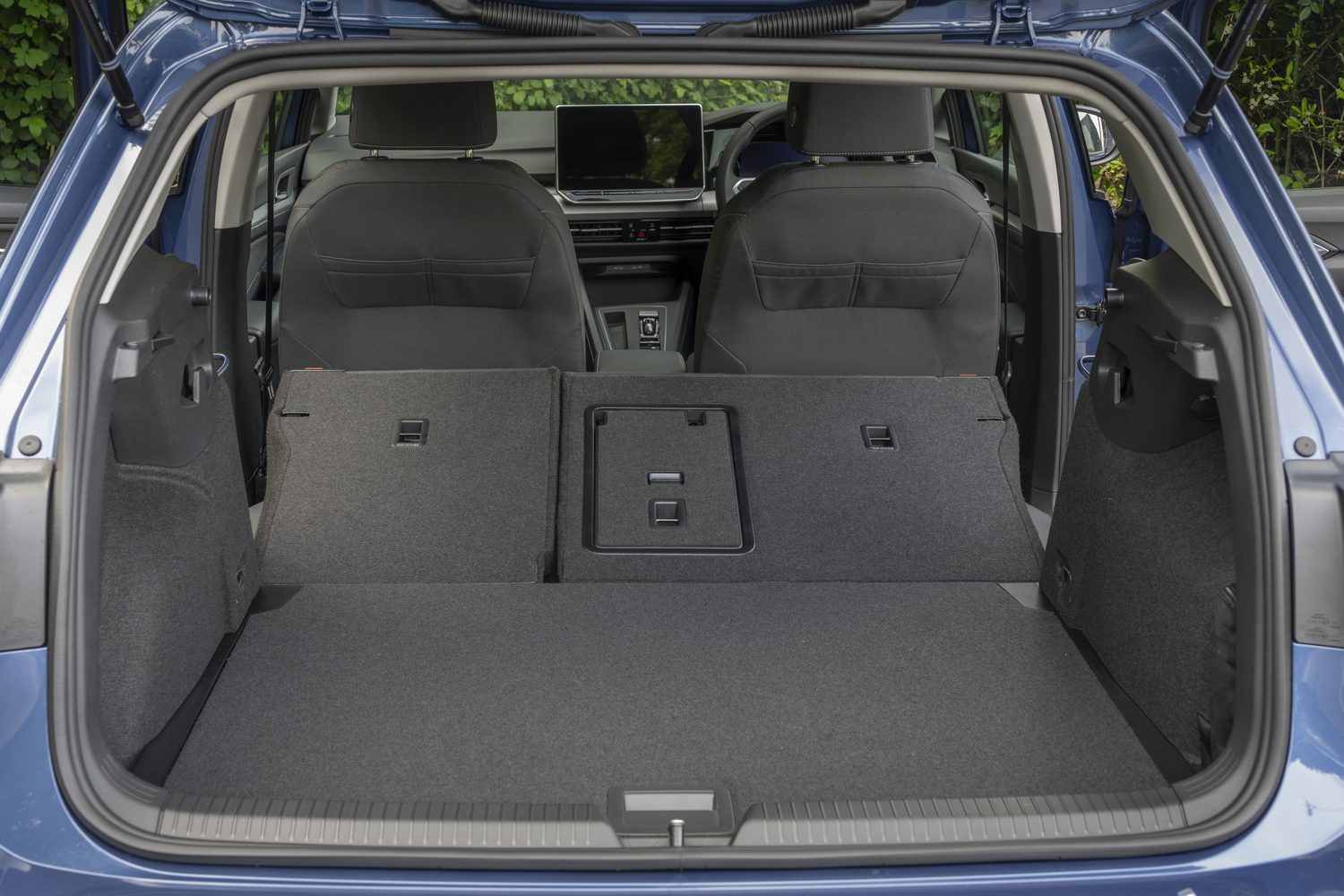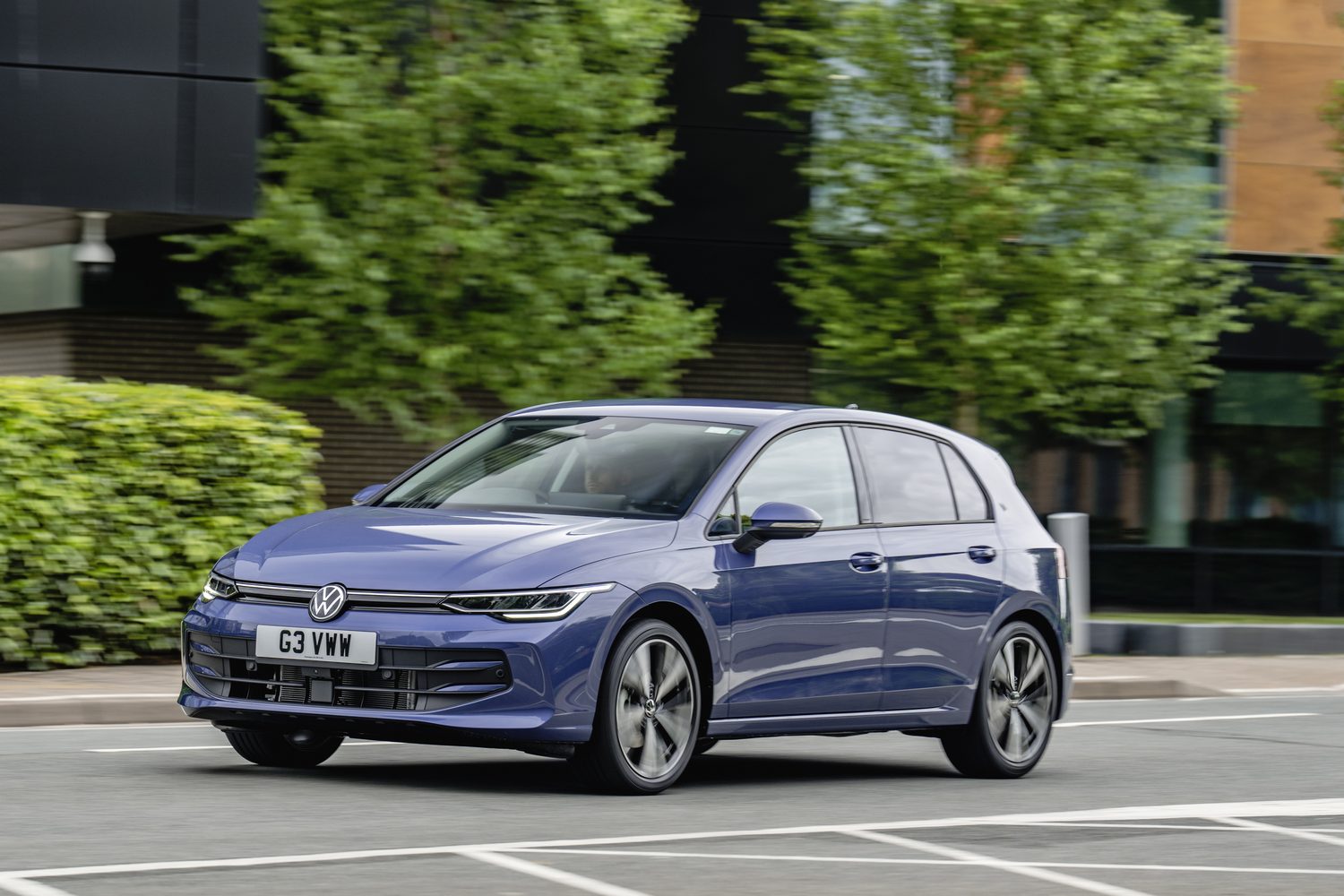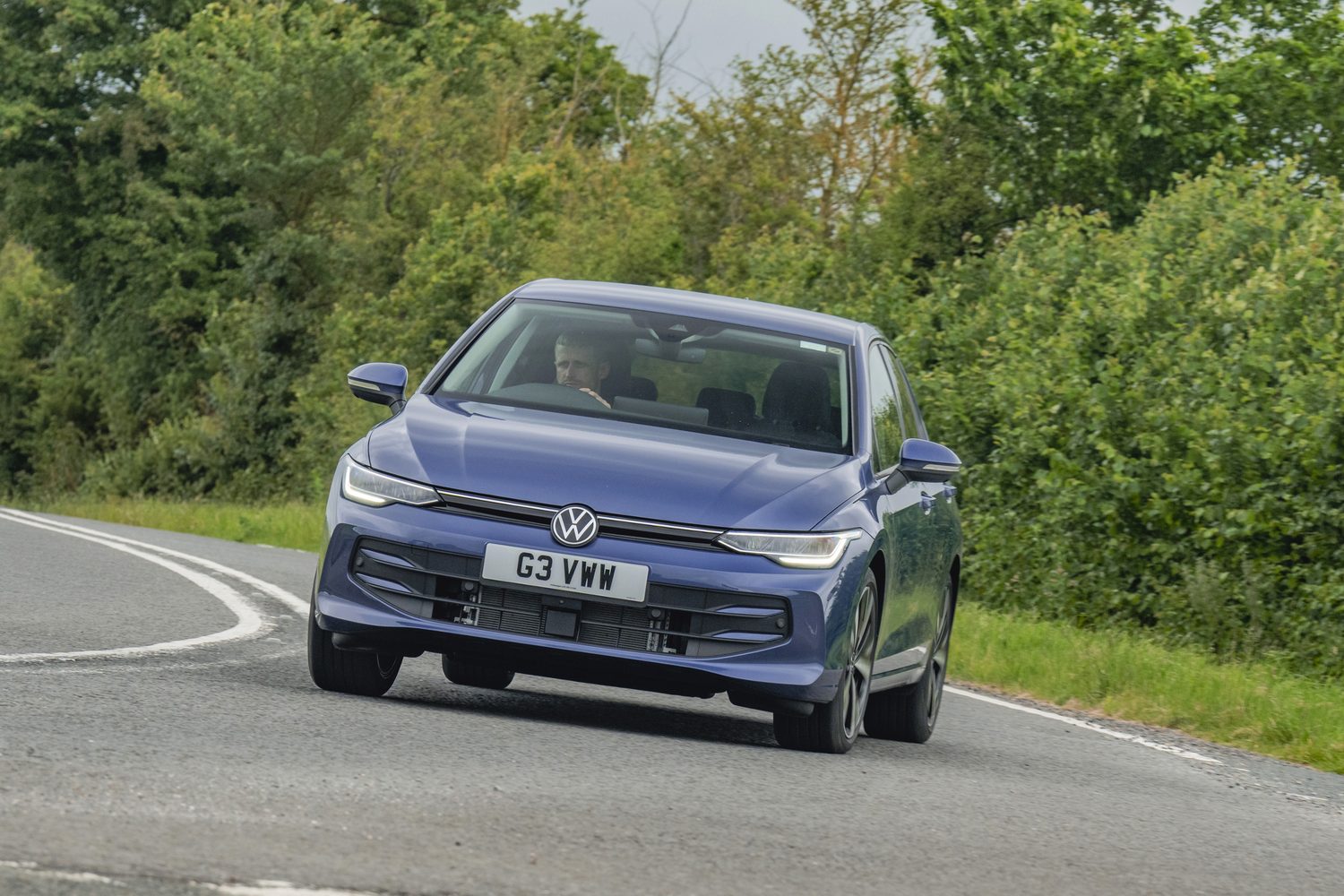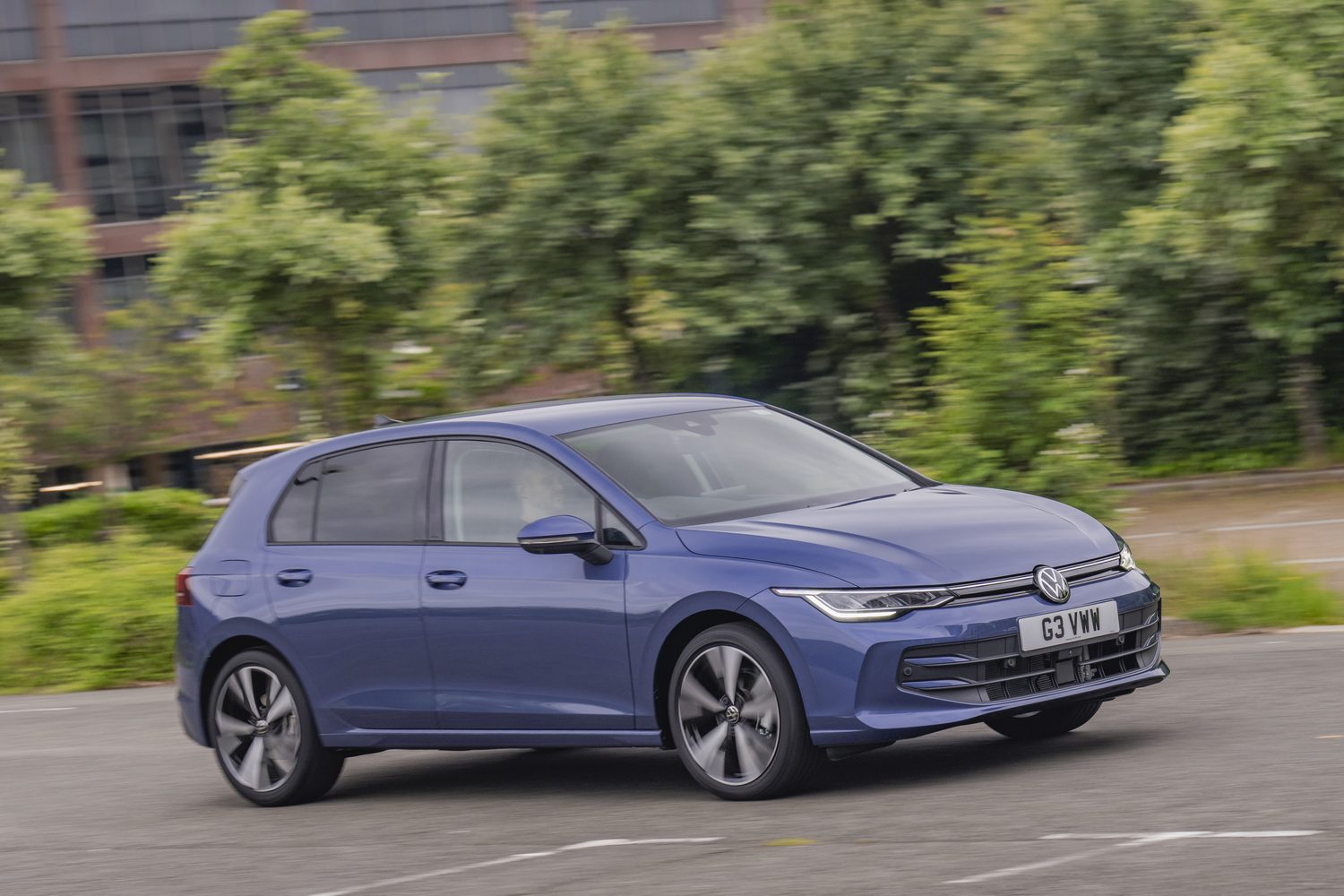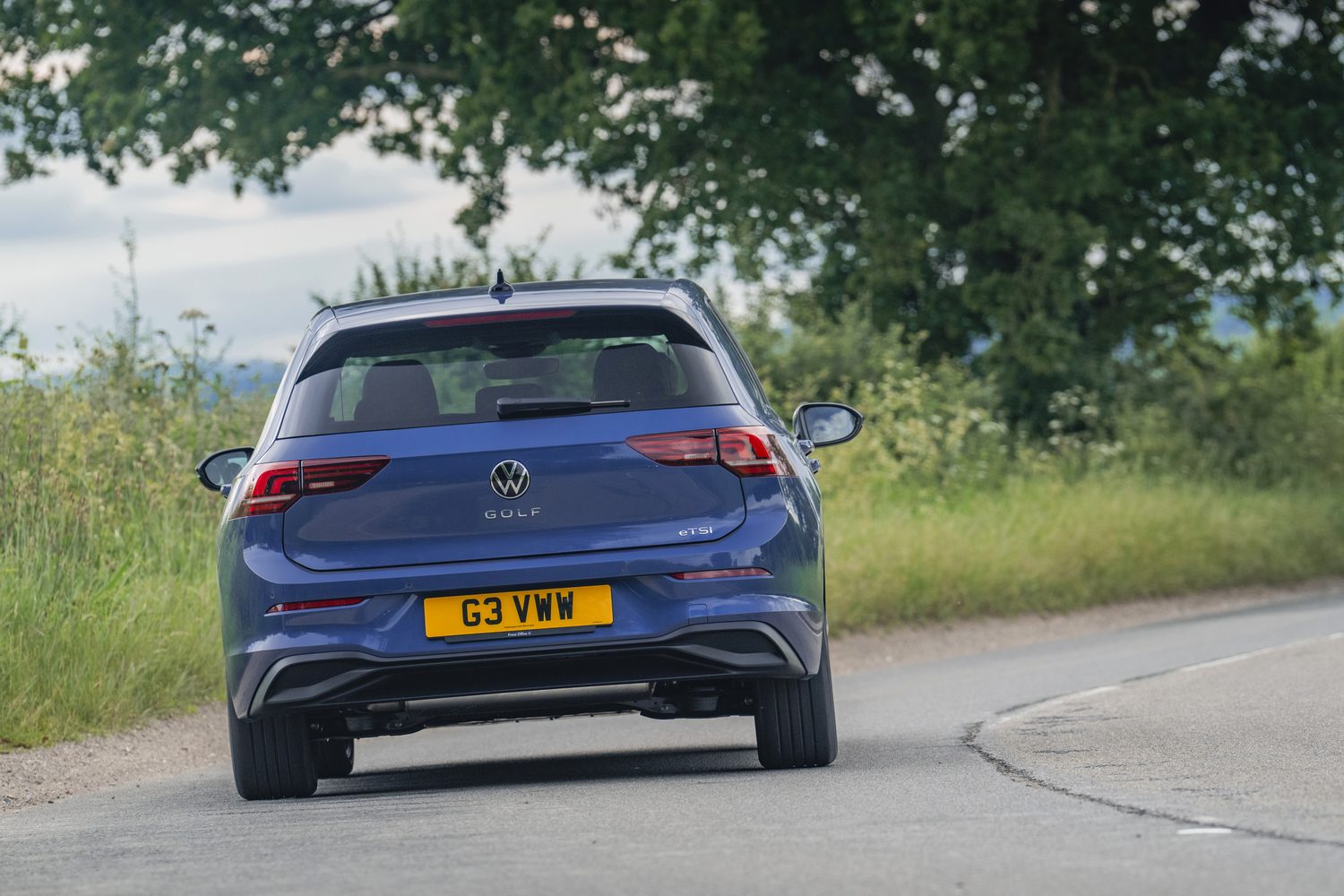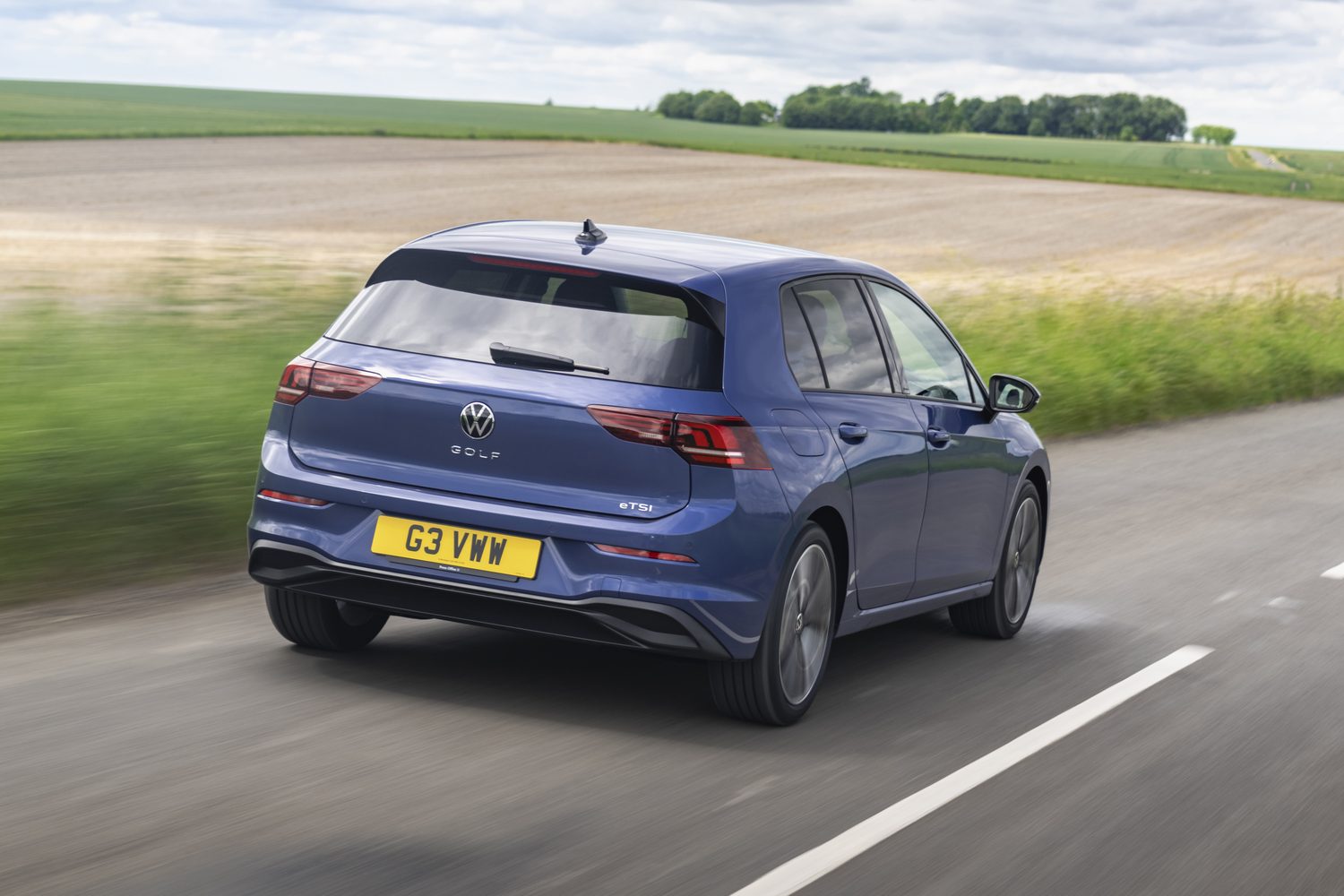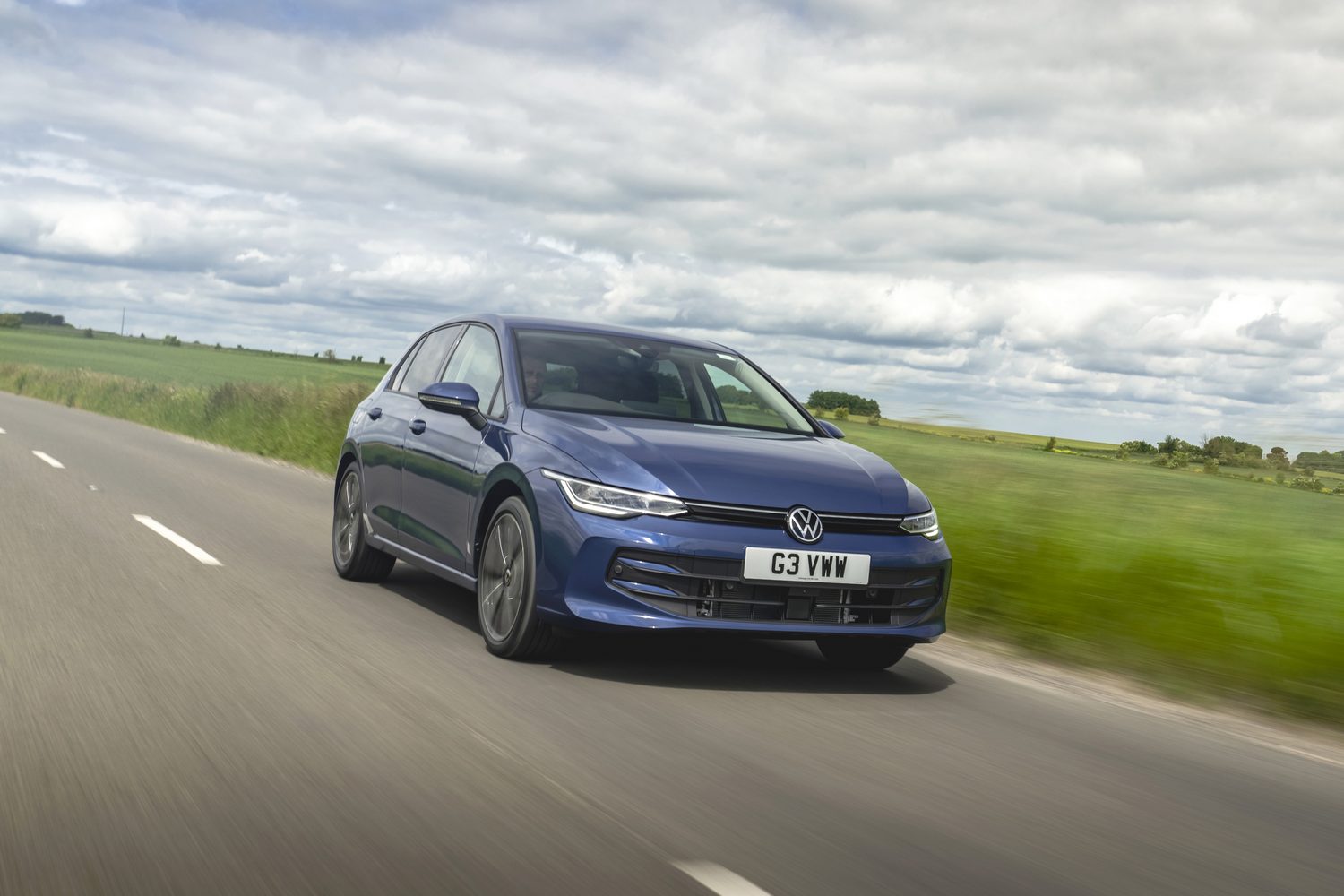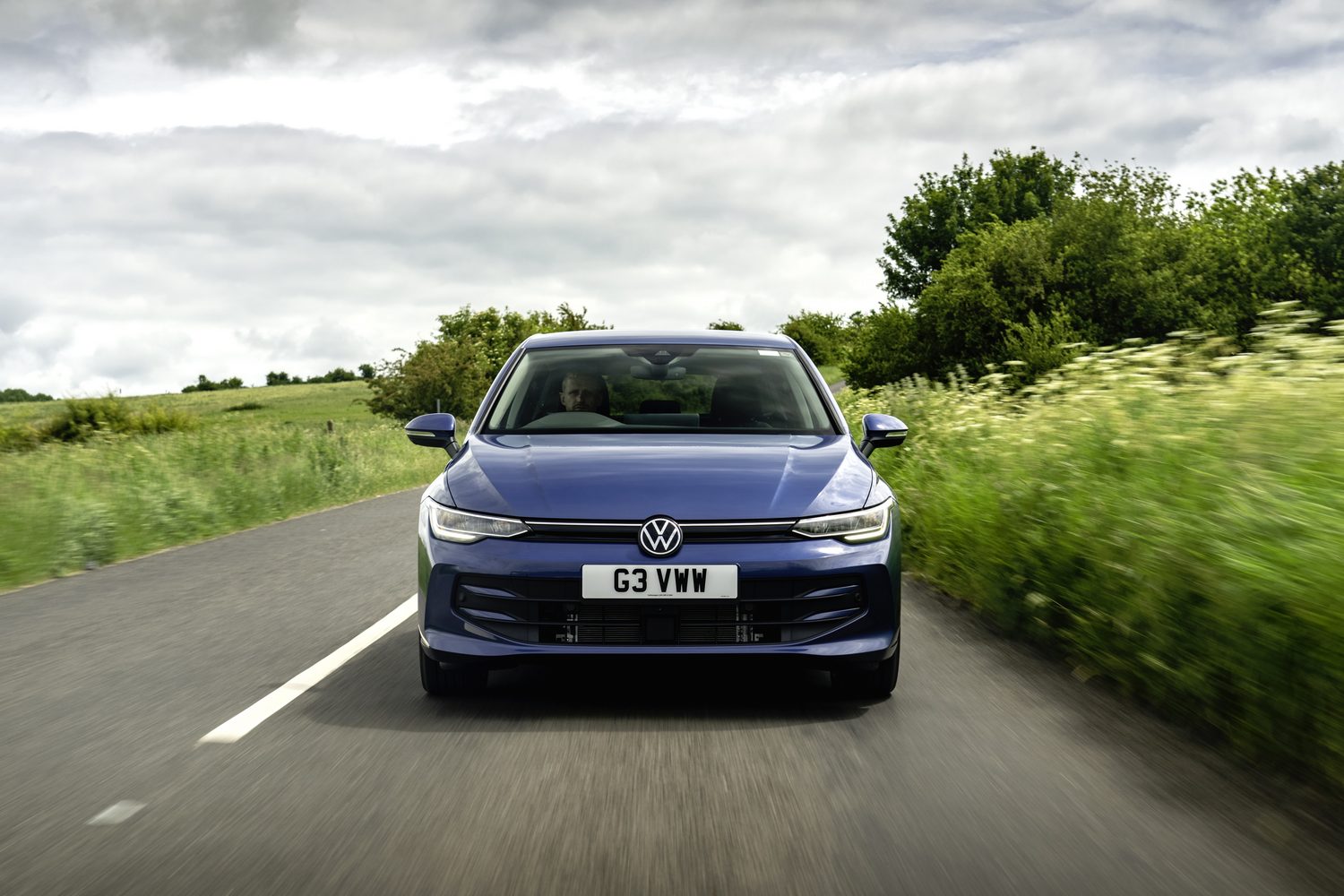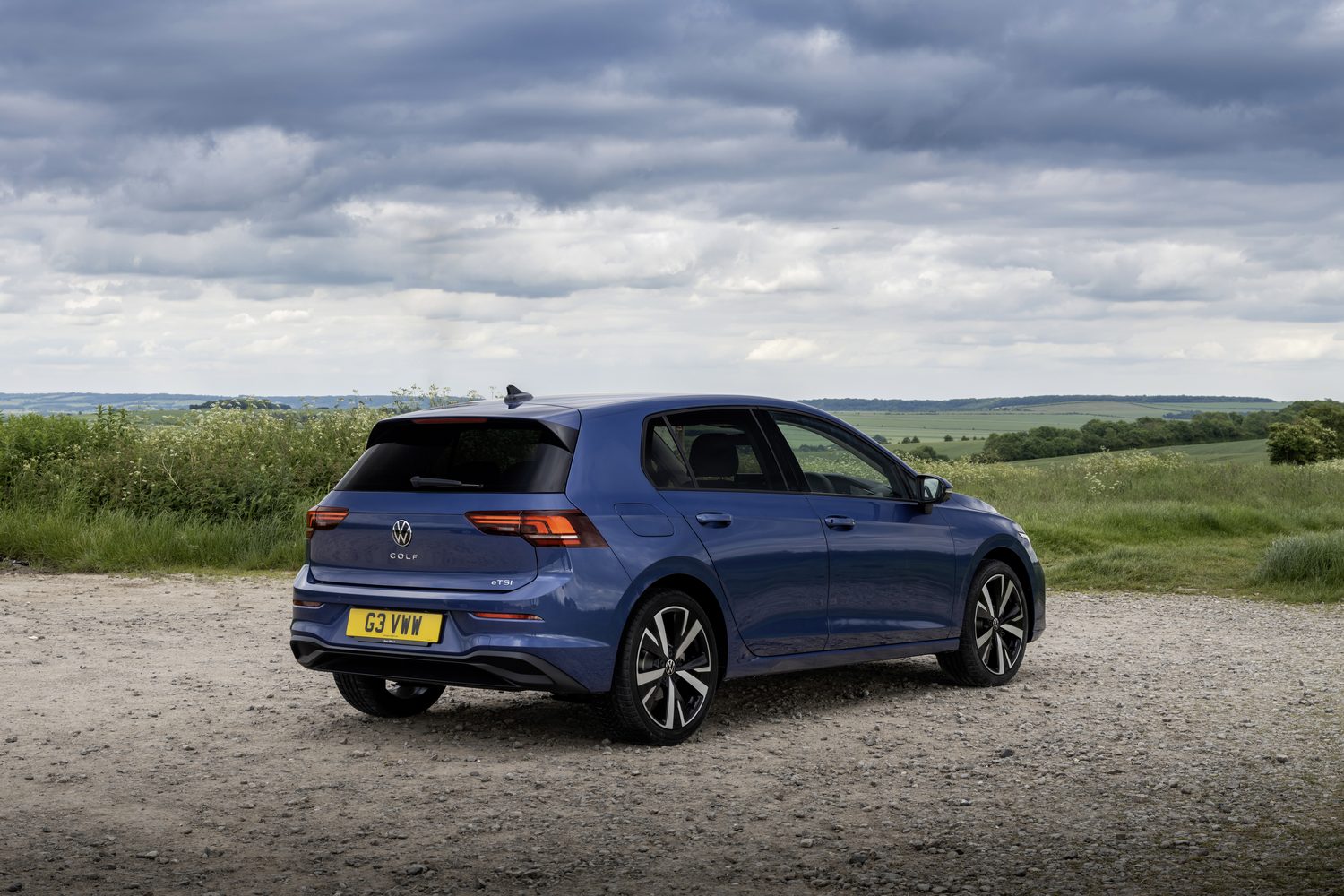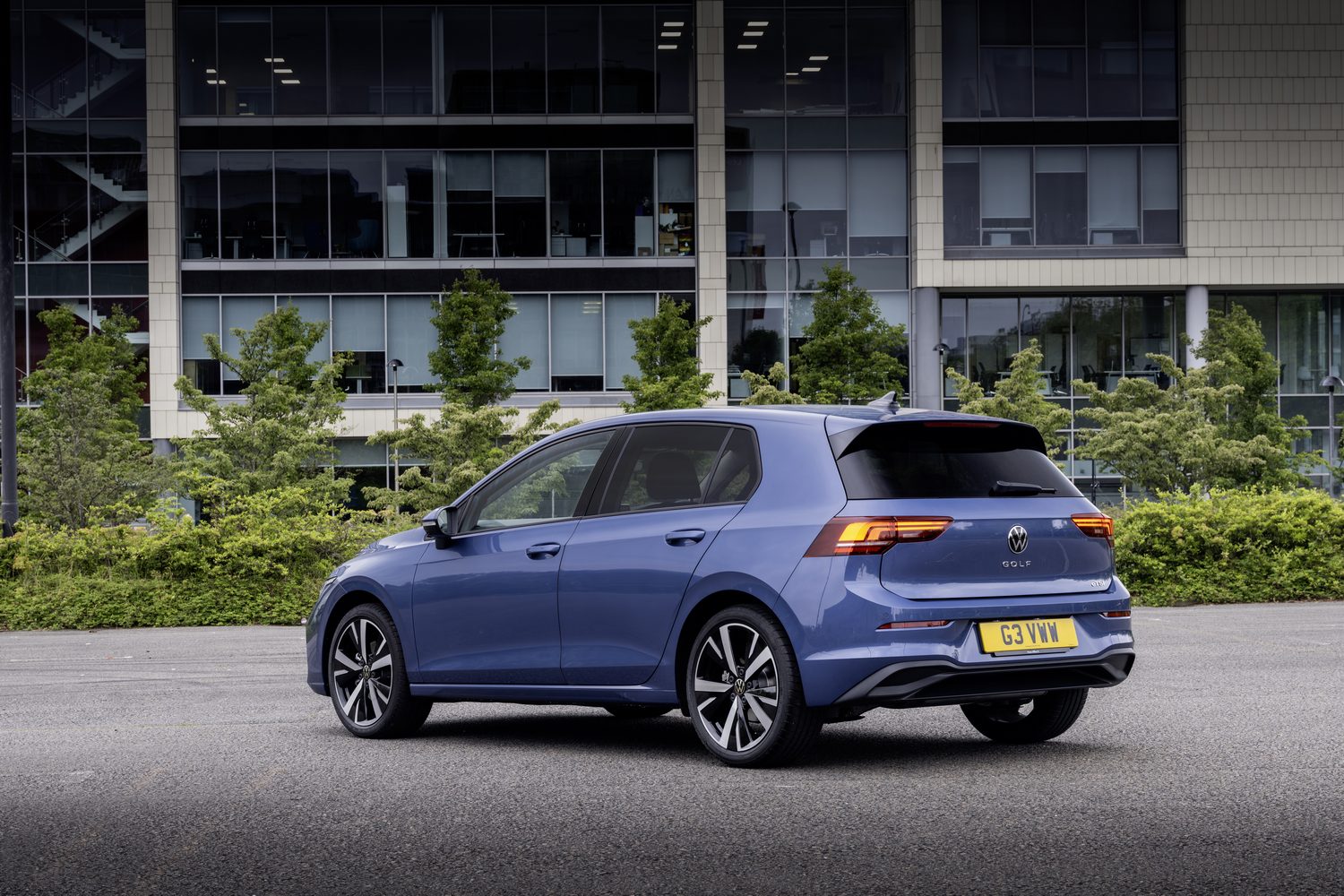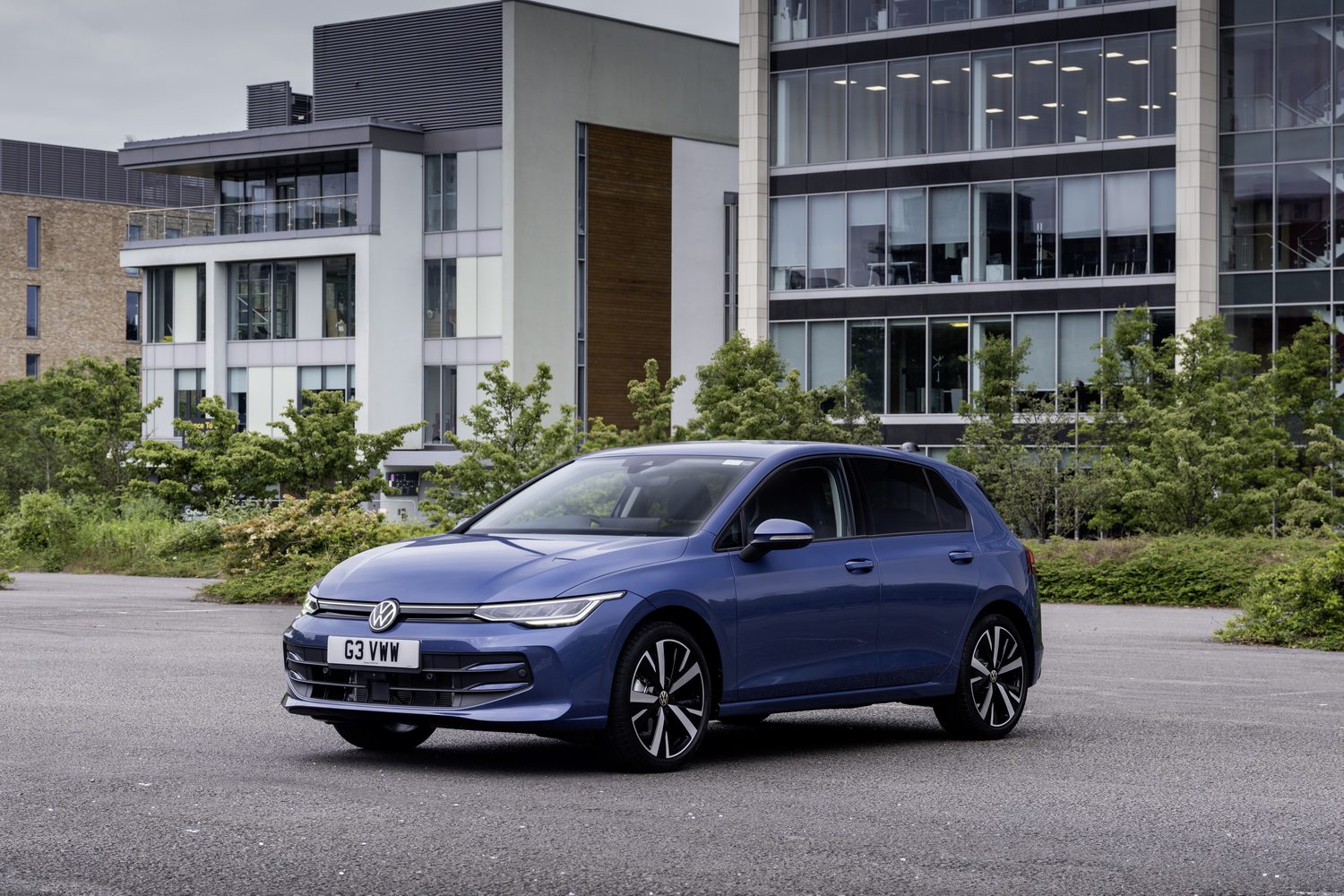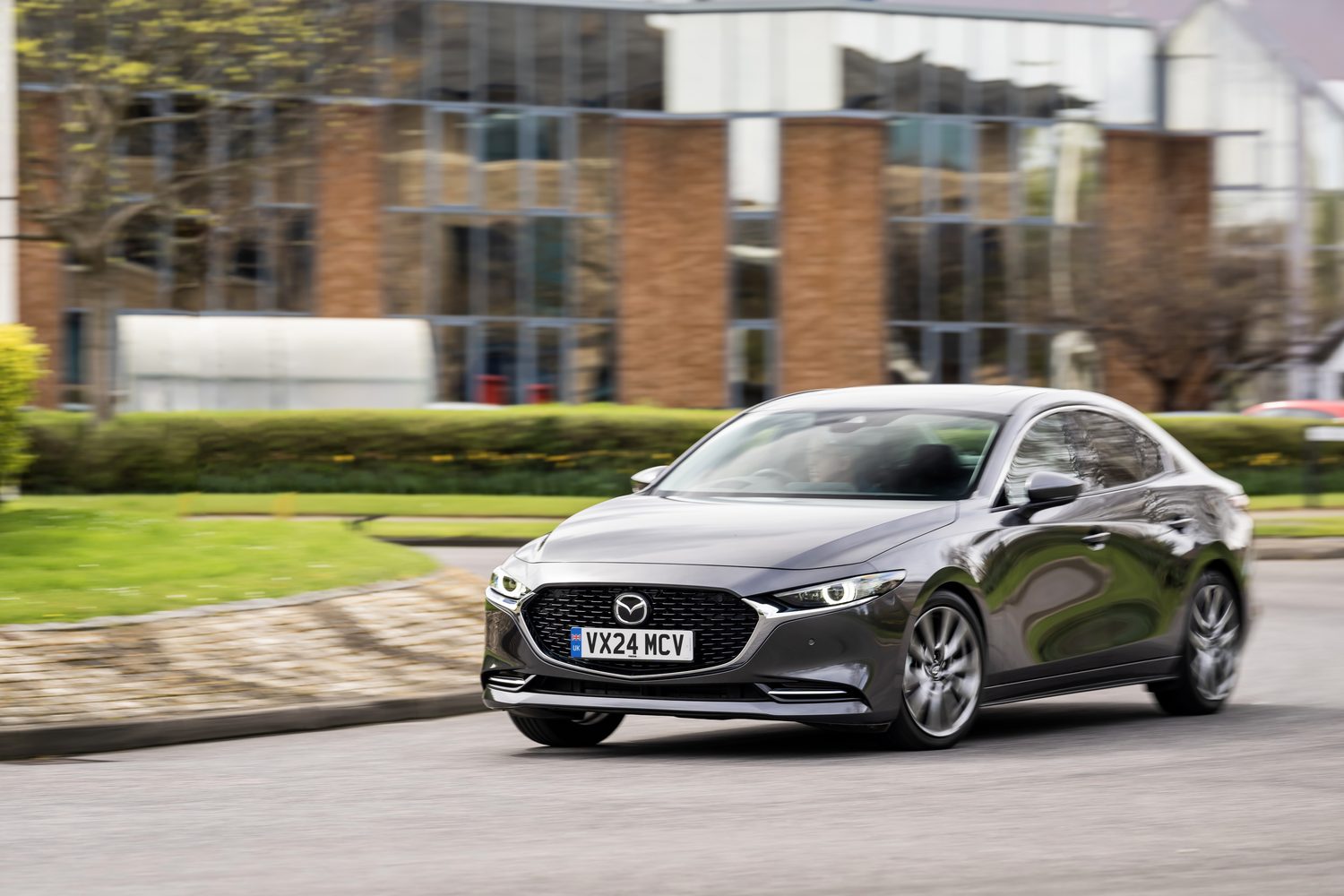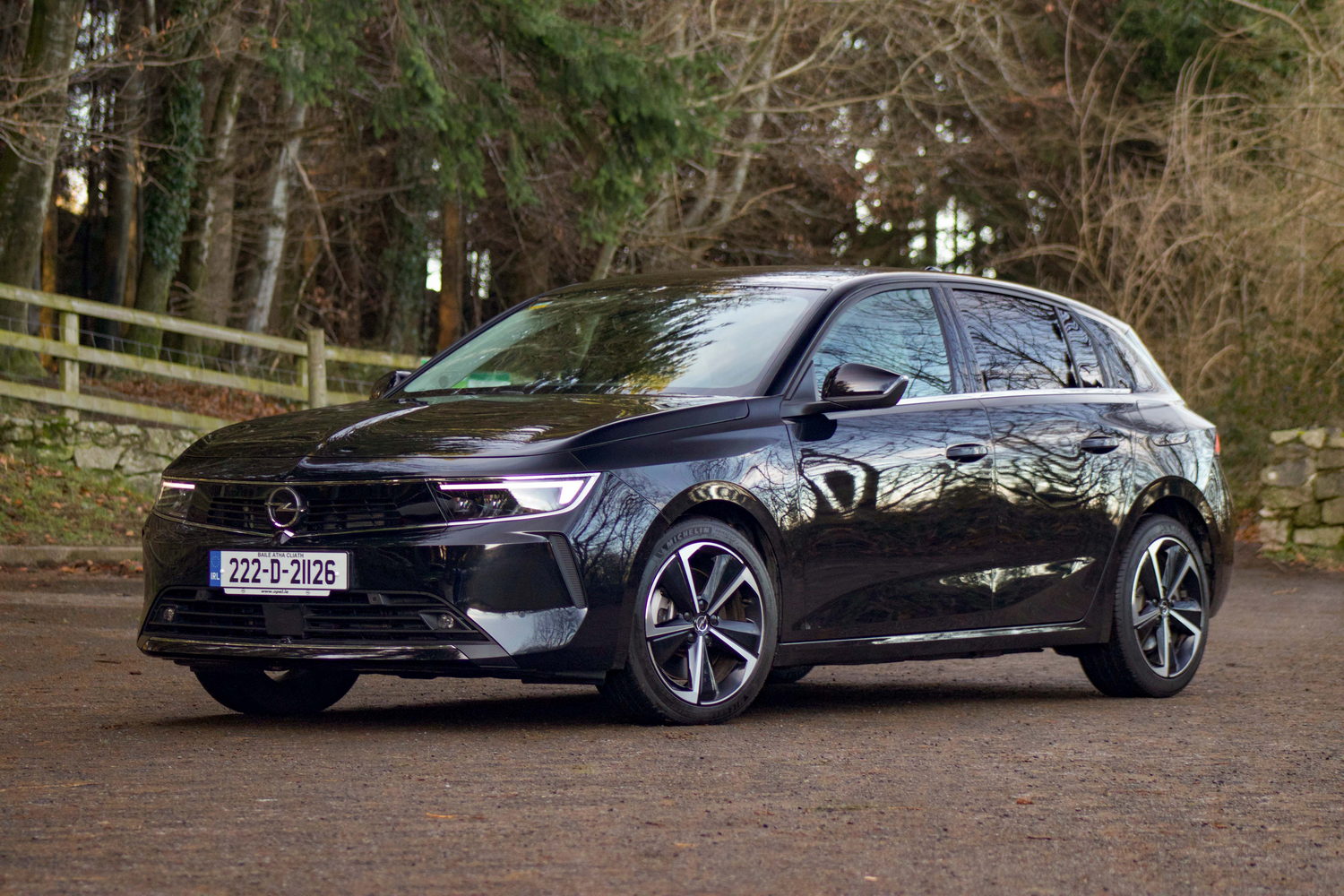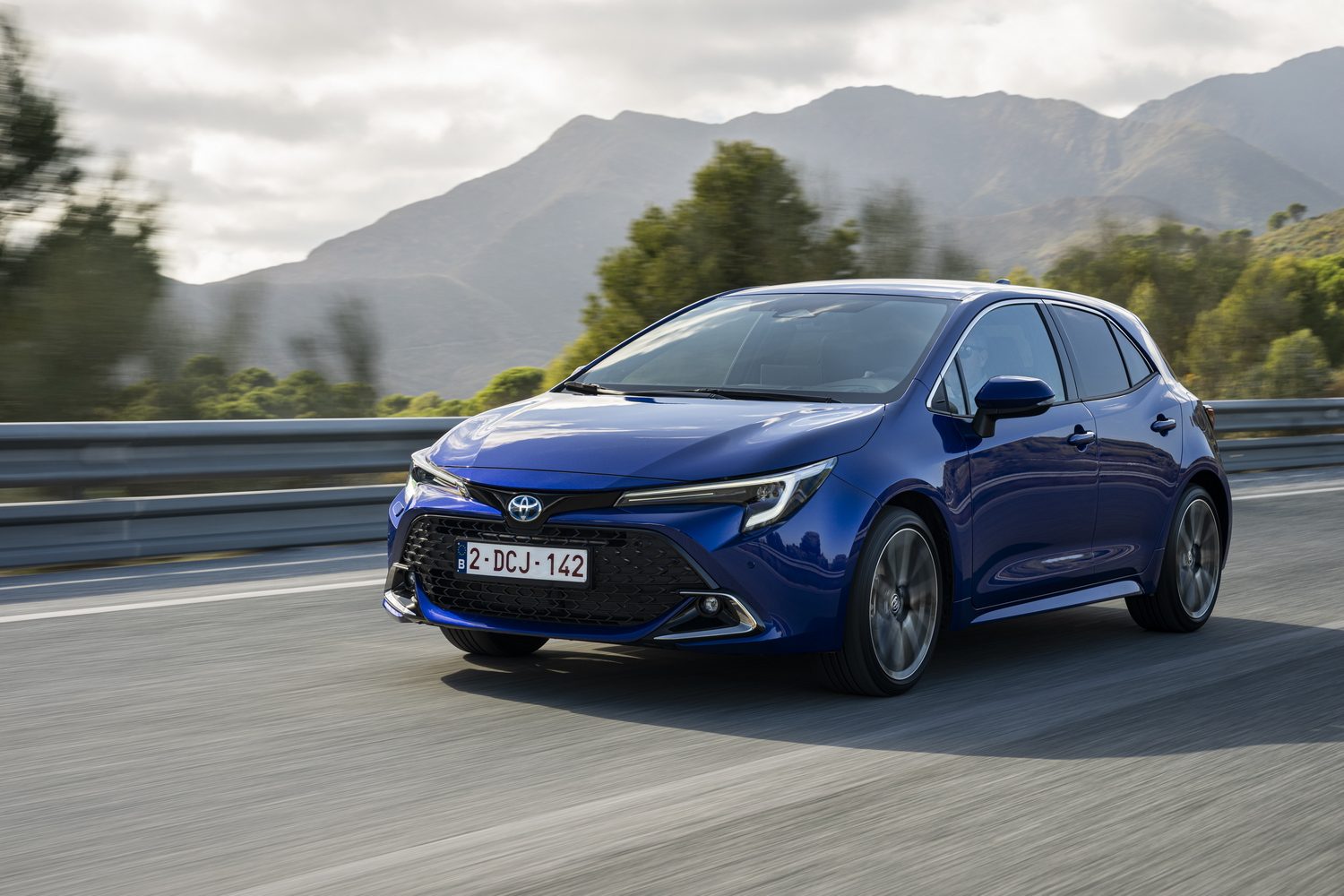Volkswagen decided not to meddle with its long-serving Golf too much in its 50th birthday year, instead moderately updating the Mk8 model with new lights outside, an illuminated bonnet badge and improved infotainment within. In its regular, non-performance format, it’s still offered with a choice of 1.5-litre petrol and 2.0-litre diesel TSI and TDI units, as well as mild-hybrid-equipped petrol options badged eTSI - and here, at a UK driving event, we’re sampling the entry-level eTSI with 115hp in a lower specification of Golf than the ubiquitous R-Line; how does this latest version of a genuine motoring icon stack up?
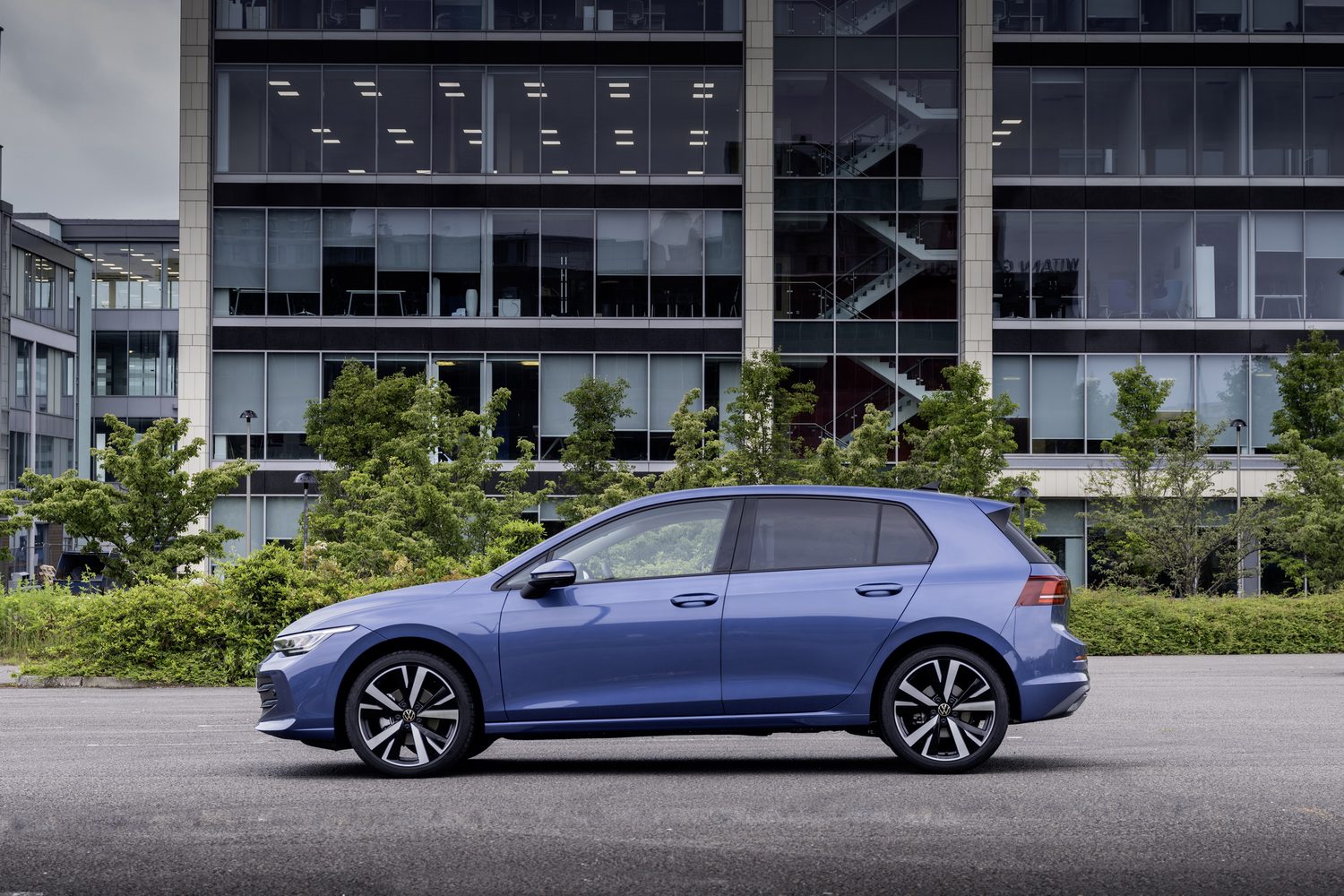
How much is the 2024 Volkswagen Golf?
The updated range starts from €32,880 in Ireland, with specifications running Launch Edition, Style, Edition 50 (to celebrate the Golf’s big anniversary in 2024) and then R-Line. Above that, you get into the realms of the high-performance family of the Golf, including variants such as the GTI and the R.
Even base-spec Launch Edition cars come with a decent equipment list that includes 17-inch alloy wheels, adaptive cruise control, single-zone air conditioning, keyless entry, LED lights outside, rear parking sensors and a reversing camera, a leather-wrapped multifunction steering wheel and more. Gone are the days when Volkswagens at the lower end of a model line came with next to nothing fitted to them as standard.
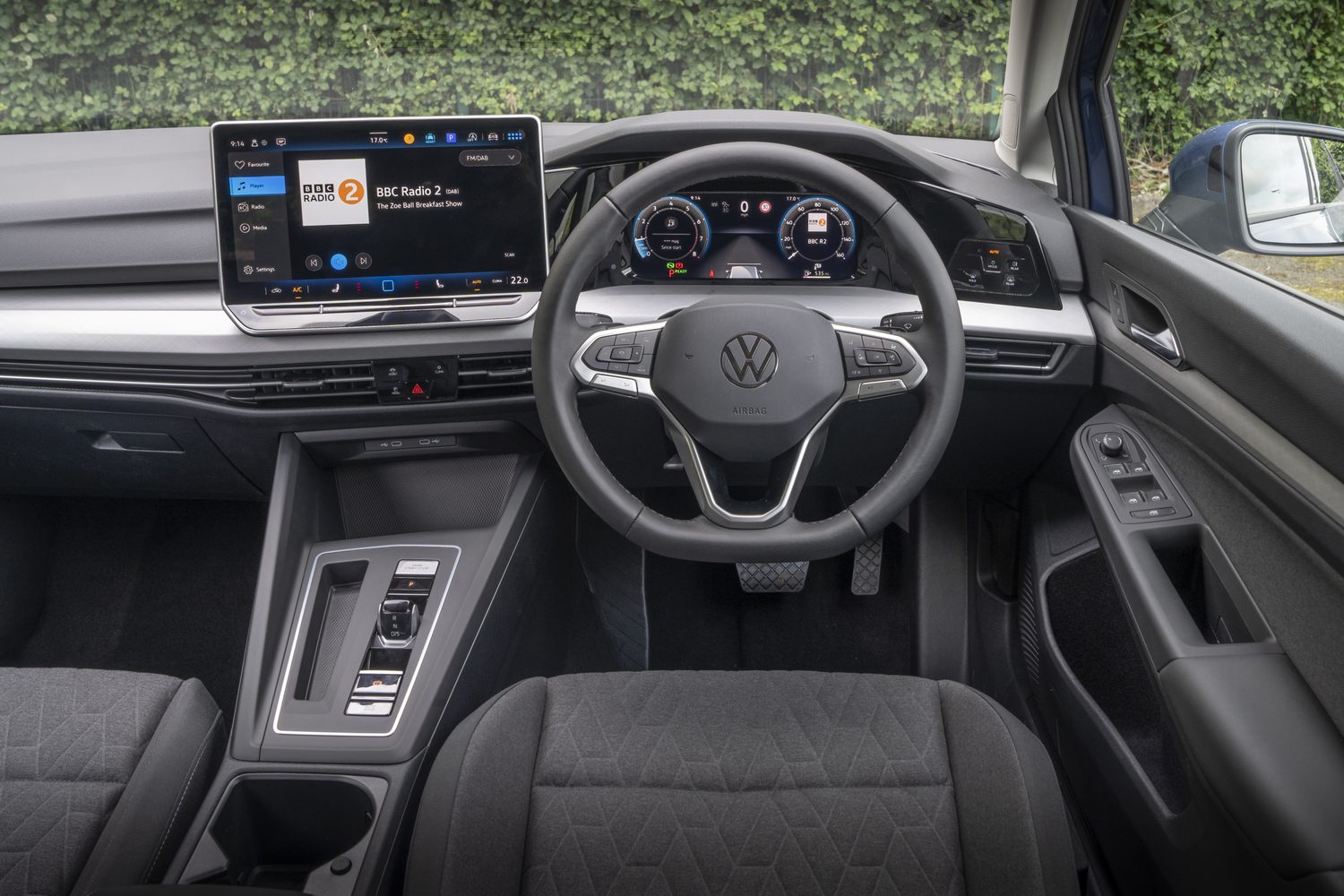
What’s different about the appearance of the Volkswagen Golf?
So very, very little that if you’re shown a picture of the pre-facelift Mk8 Golf and then the new ‘8.5’ car side-by-side, with the changes between them highlighted with pointer graphics, you still will be squinting at the photo and asking “umm, are you sure the car on the right-hand side of this image is the new one?” This is incredibly mild stuff from Volkswagen, with new lamp-cluster technology at both ends of the car - even if the clusters themselves haven’t changed shape in the slightest - while the front bumper and lower airdam have been ever-so-marginally tweaked. The major giveaway as to the 2024 model year Golf’s status will therefore come at night, because it’s the first model in the car’s 50-year history which has a light-up ‘VW’ nose emblem. But seriously, everything else is pretty much the same, save for some additional body colours and alloy-wheel designs.
A look inside the Volkswagen Golf
Material quality in the Golf was always one of its strong points, although the Mk8 - when it appeared in 2020 - wasn’t as well-received as some of its forebears in this department. In truth, not a huge amount has changed inside the cabin of the VW, with the main 2024 switch being the latest infotainment system (more on which below). That said, the new steering wheel buttons are less cheap-feeling to operate than the old system’s and a few of the dash trim finishes have been updated; these look good to the eye, although tapping them reveals they sound and feel a bit less premium in build and quality than they first appear.
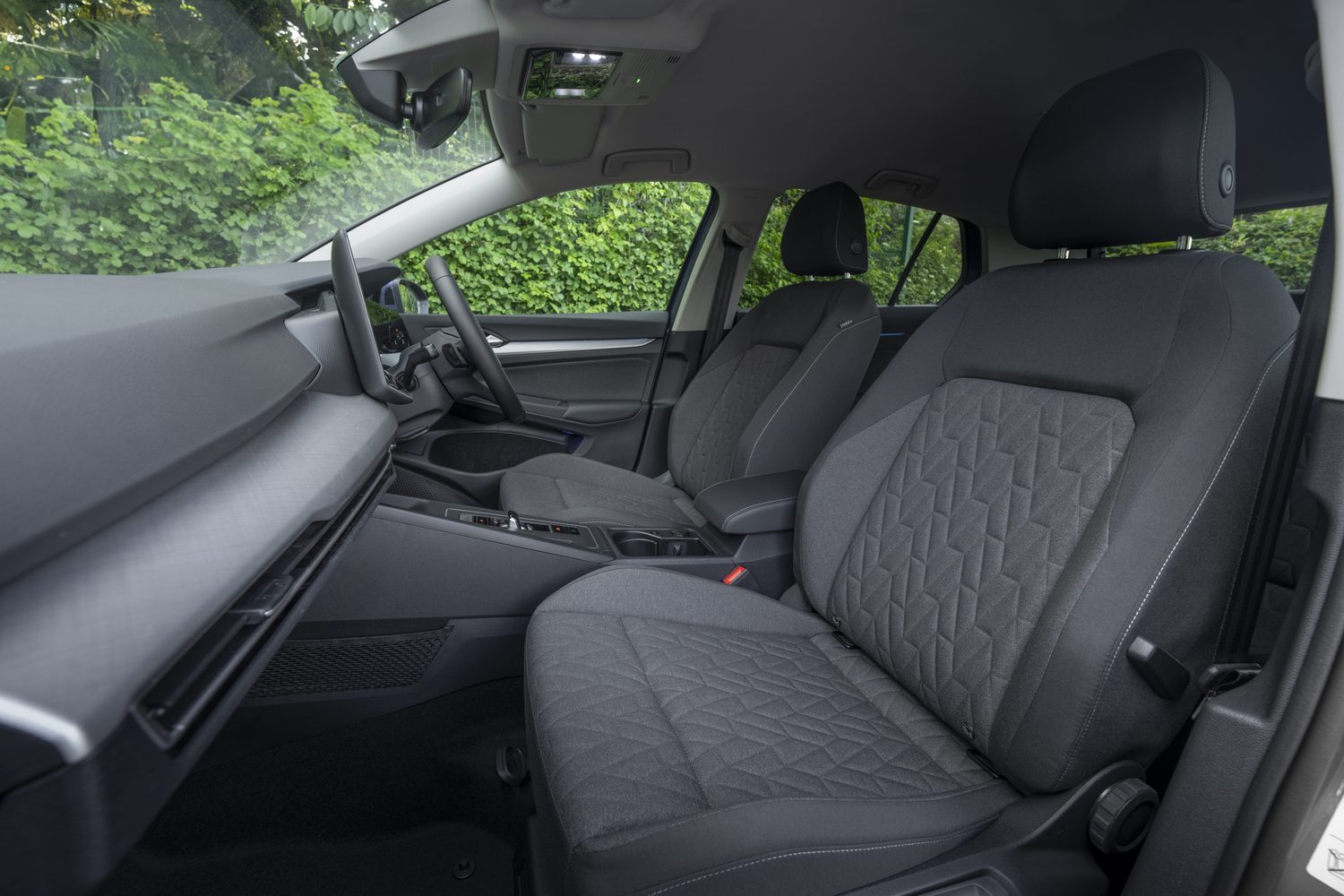
But generally, the Golf’s cabin is a success, while passenger space remains just as generous as before, so there’s plenty of room for four people, though five would be more of a push unless at least two of the car’s occupants were children. There are ISOFIX fittings for kids in the back, with another car-seat mounting point in the front passenger seat. Boot capacity is also the same as before, with a Golf hatch like this accommodating 381 litres on the standard measurement. That’s still average for this class of car, so from a practicality perspective the Golf ticks the key boxes.
The Volkswagen Golf’s on-board technology
One of the big bugbears of the pre-facelift current Golf was its often-infuriating infotainment system, including the non-illuminated sliders for temperature control and sound-system volume beneath its central screen. So that’s the key area that Volkswagen has addressed for the updated model, fitting the latest 12.9-inch touchscreen with the ‘MIB4’ operating system; it has also put some backlights behind those sliders, so you can see them at night, and as we’ve already touched upon it has got rid of the haptic touchpads on the steering wheel for proper, physical buttons this time around.
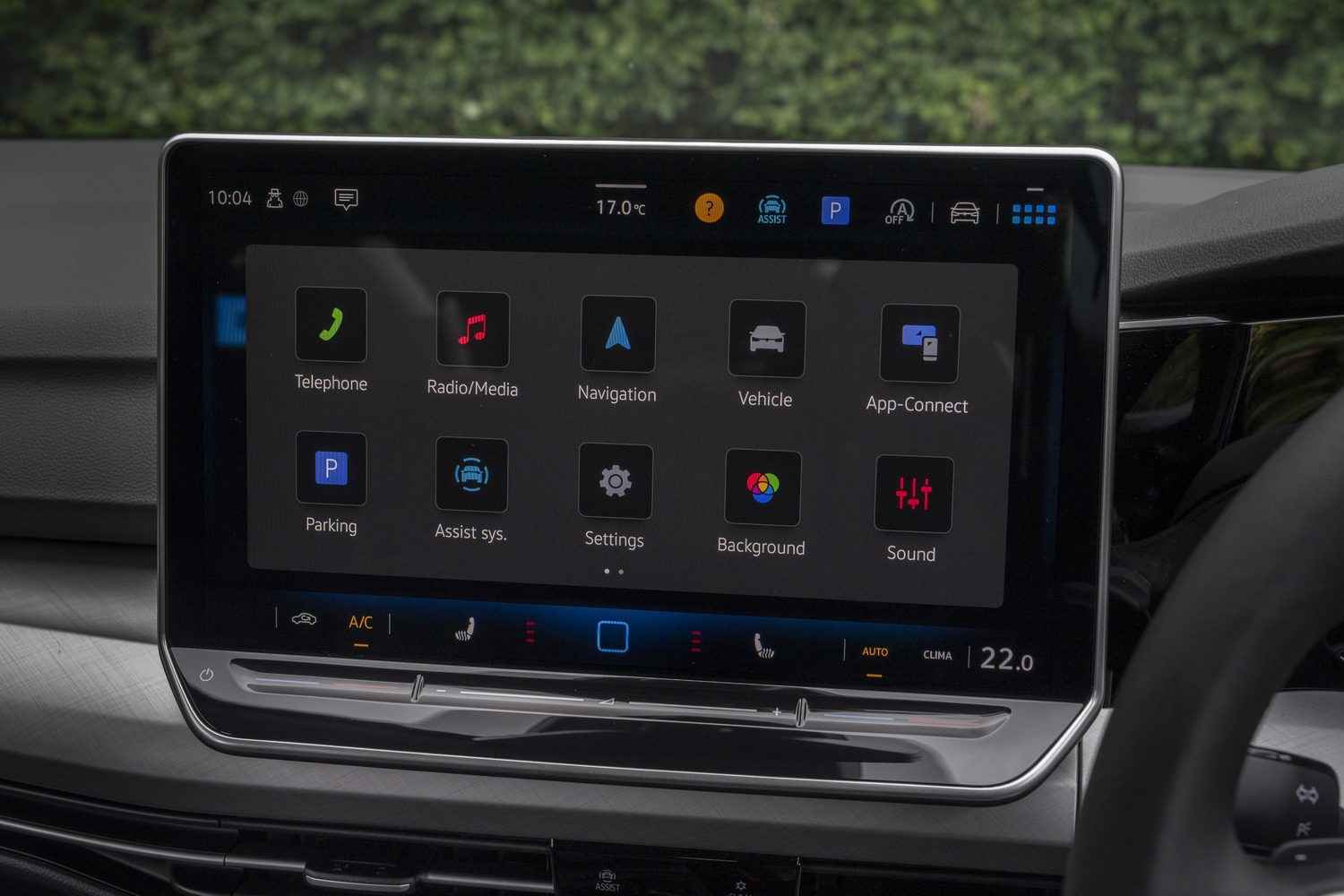
While there are still issues with the new set-up - the climate functions, save for that temperature slider, are all on the screen, and it still takes a bit of prodding here and there to get some of the most nannying driver-assist aids switched off - the Golf’s interface is nevertheless much-improved by the alteration. And even if you don’t like what Volkswagen has provided, both wired and wireless App Connect means you can hook up your Apple or Android smartphone and use the screen layout of that instead.
Driving the Volkswagen Golf
If you opt for the lower-output 1.5 eTSI as tested here, you lose 35hp and 30Nm over the 150hp derivative of the Golf Mk8.5, which does result in some performance losses - the 0-100km/h lengthens to a time beyond ten seconds, for instance, while the 116hp model can tow 200kg less of braked trailer with a maximum rating of 1.3 tonnes �" but out on the road you will barely notice the difference between the two unless you absolutely gun the engine to the maximum.
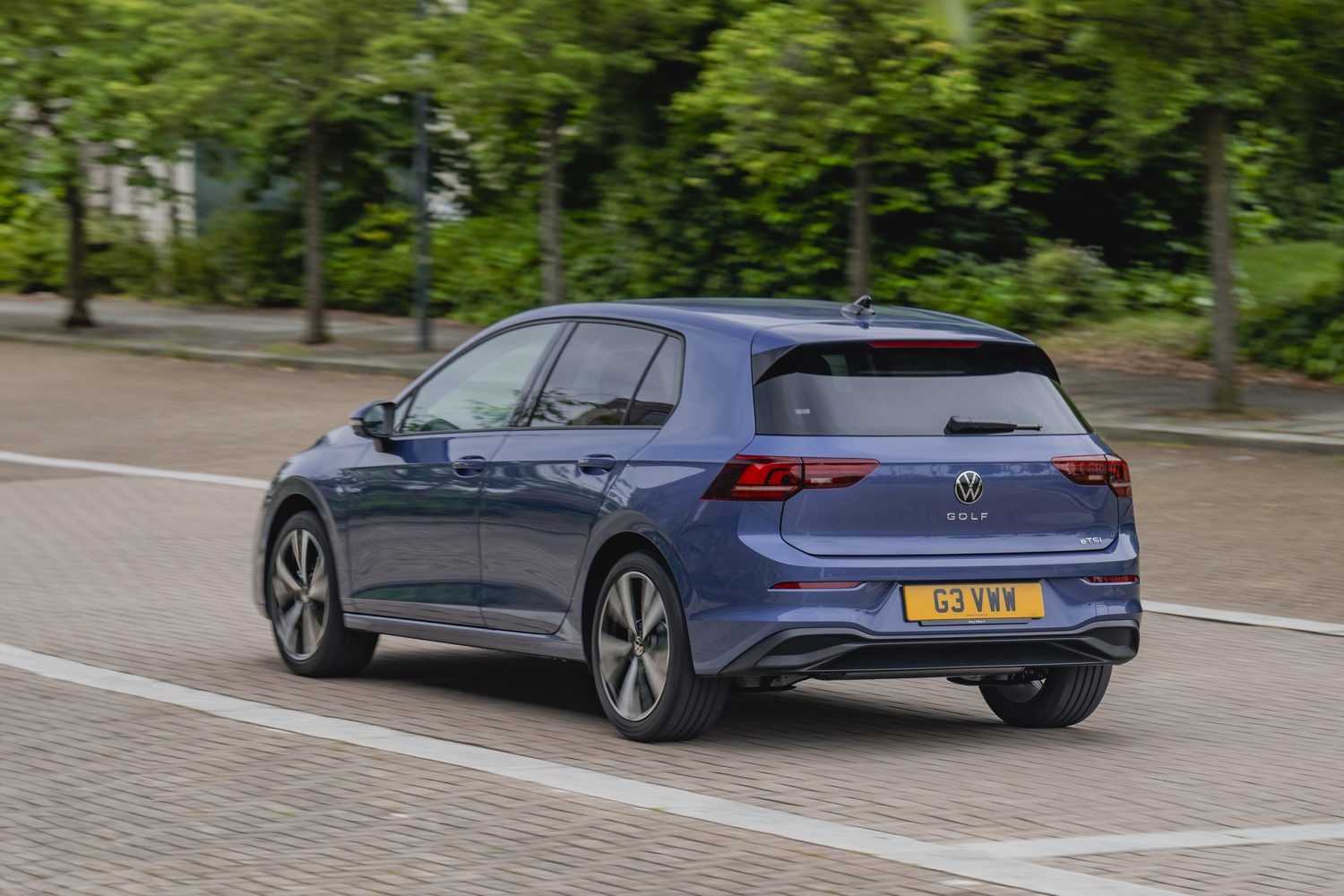
For most of the time, the 48-volt mild-hybrid system and the 220Nm of peak torque available from a lowly 1,500rpm both team up to ensure that the 1.5 eTSI 115 is a perfectly flexible and willing performer for day-to-day driving duties. And by not thrashing it right around the rev counter, you avoid the only significant drawback of the 1.5-litre four-cylinder engine, which becomes noisy and harsh beyond 4,000rpm.
Otherwise, though, it’s a pleasure to drive, with good, smooth responses (including from the previously sometimes-hesitant DSG transmission) and plenty of refinement. This Golf also benefits by being specified in a lower specification in terms of ride comfort, because it sits on smaller alloy wheels (17-inch ‘Nottinghams’ as either a Launch Edition or a Style) with bigger-sidewall tyres to start with, while it also does away with the sports suspension set-up of the R-Line. This makes its ride comfort supremely capable, with the Golf rarely thumping about even on poorer road surfaces. We’d definitely advocate ‘going lower’ with spec when it comes to the regular car.
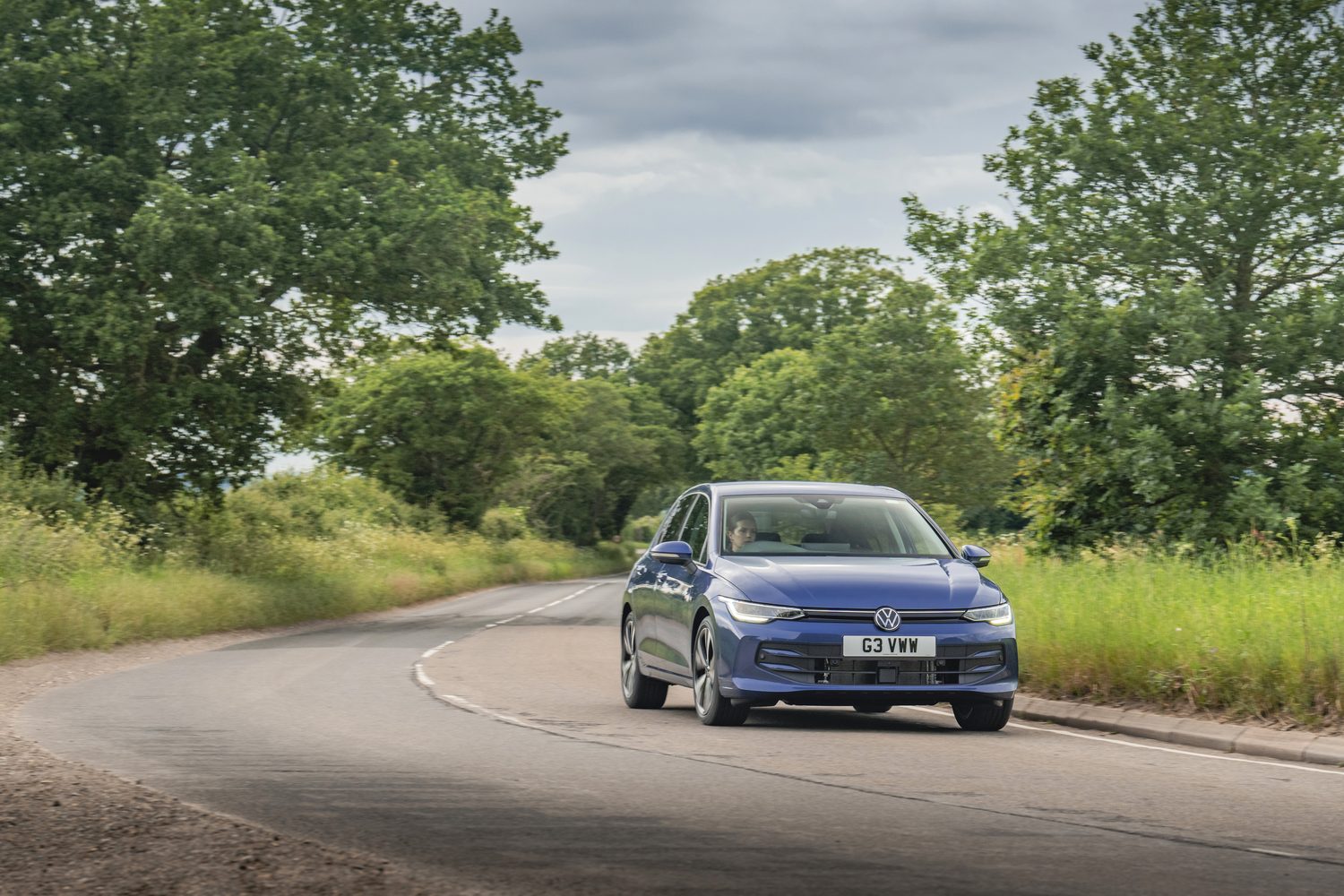
What the Golf never is is massively exciting to drive. All of its major controls are fairly well weighted and provide consistent, accurate responses, but at no point does the steering or the body control ever persuade the car’s driver to up the pace a little bit on a more interesting rural road. To be fair, though, a standard Golf doesn’t need to be exciting to drive - there are all the hot models, such as the GTI, Clubsport, GTE and R, for that kind of malarkey, so the eTSI 115’s softly sprung and rather safe, buttoned-down manners make perfect sense for this kind of car.
How economical is the Volkswagen Golf?
On paper, the 115 eTSI is a little more economical than the more powerful 150hp model, but not by a huge amount - the official figures are 5.2 litres/100km, or 53.8mpg, although we didn’t manage to quite match these numbers in relatively genteel real-world driving. One thing it does do, however, is manage to slip into a moderately lower road tax bracket as a result of emitting 4g/km less CO2 than its sibling, which means a €190 annual tax requirement, rather than €200. Maybe buy yourself a fancy coffee with your ten-euro yearly saving as a treat or something...
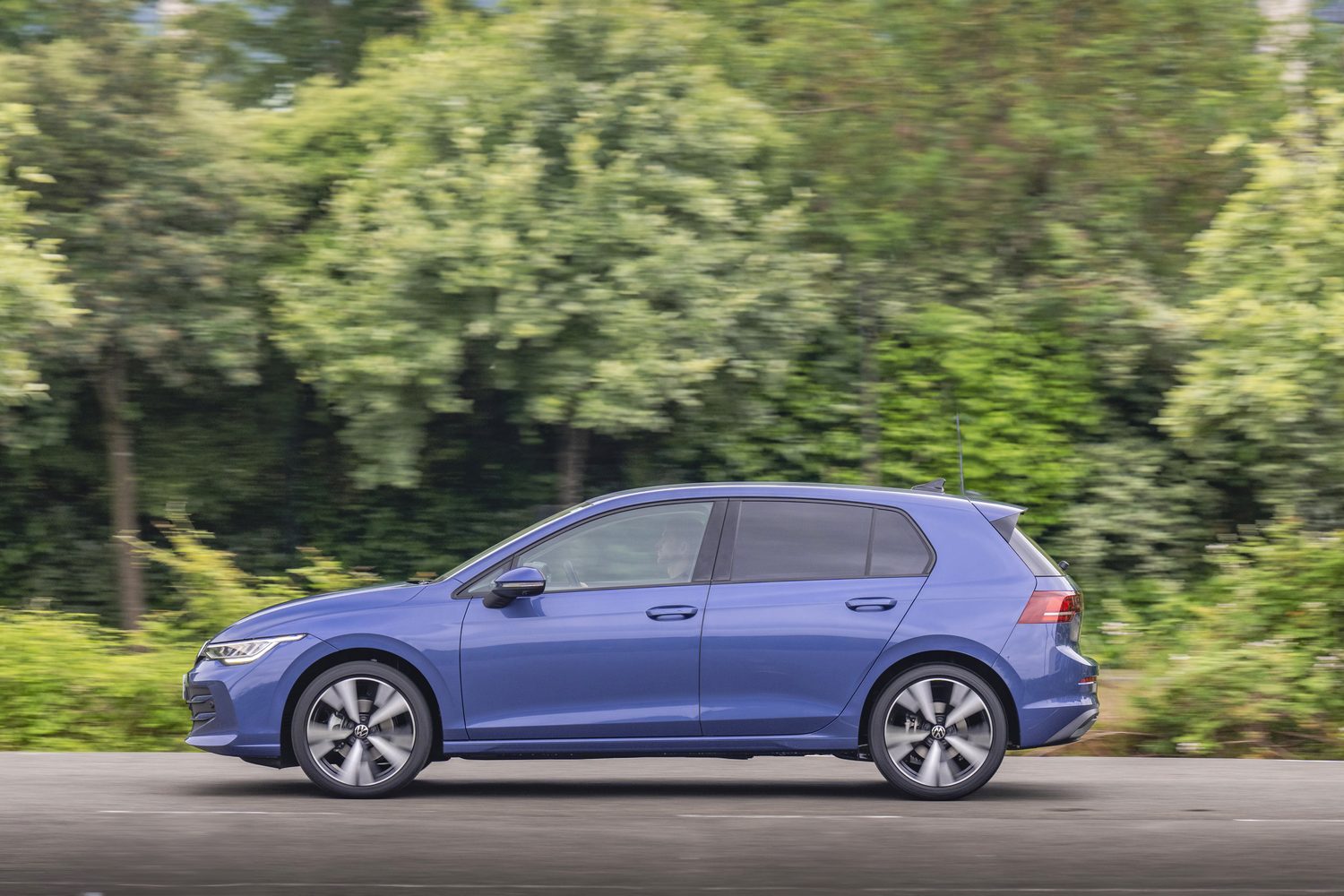
The reasons you’d buy a Volkswagen Golf
When we were introduced to this updated eighth-generation Volkswagen Golf, we were told by a company spokesperson that “you know what you are getting with this car”. And that’s the reason people still buy the German hatchback to this day: it’s a known quantity, a safe choice in and among the sea of similar-sized hatchbacks you could have instead. Sure, the Volkswagen is rarely thrilling to drive and sure, the updated interior is still by no means faultless by this company’s own high, traditional standards, yet the revised Golf is a smooth, sophisticated operator that does nothing particularly wrong and many, many things very well indeed.
Ask us anything about the Volkswagen Golf
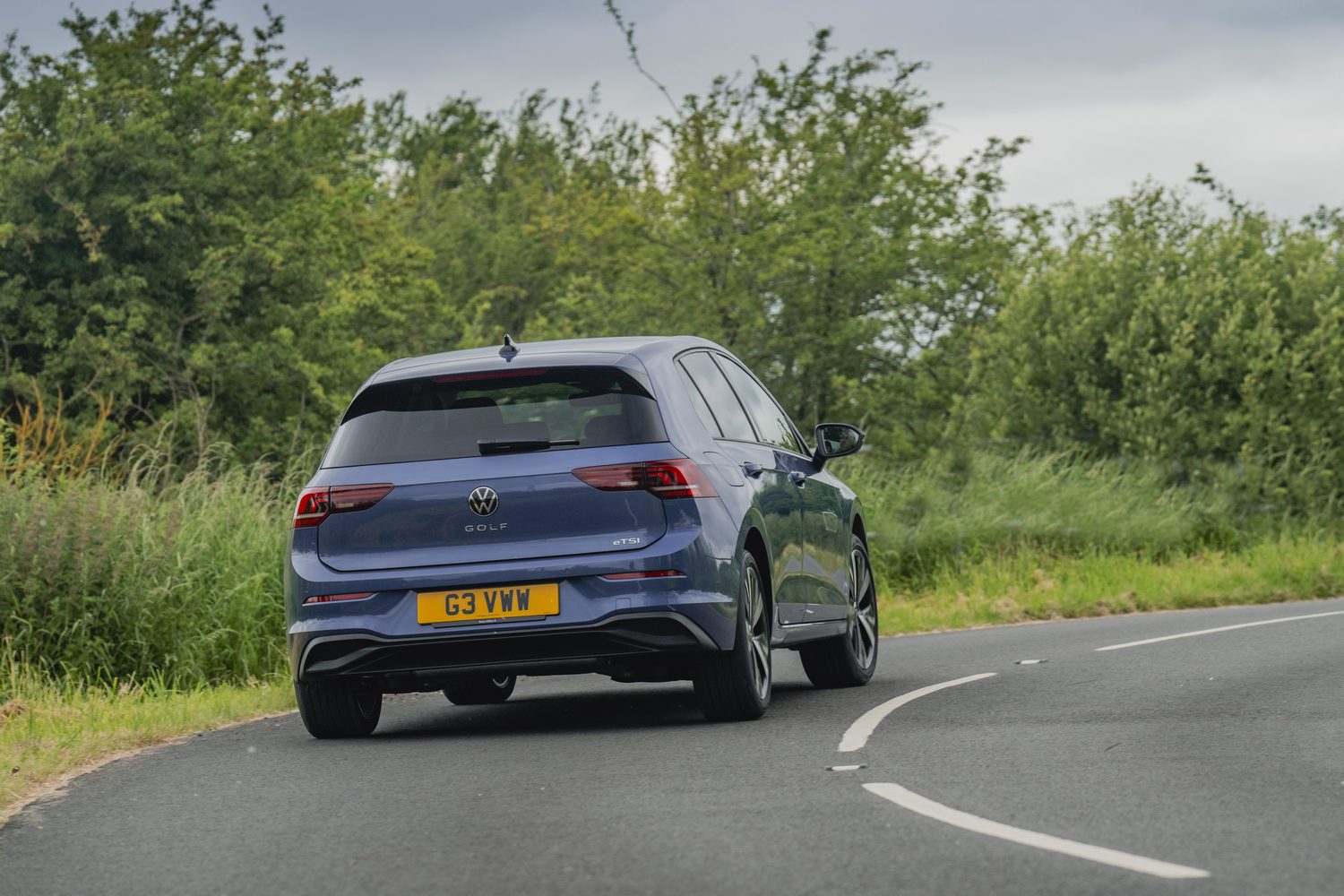
If there’s anything about the Volkswagen Golf we’ve not covered, or you’d like advice in choosing between it and other cars, you can avail of our (completely free) expert advice service via the Ask Us Anything page.

